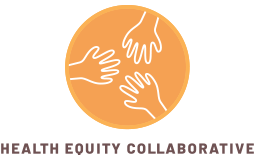11 May New Resource: Culturally Competent Healthcare Guide to Advocate for Sikh Communities in the United States

May 11, 2023
By Nimarta Kaur, The Sikh Coalition
Sikhism is the fifth largest religion in the world, with more than 25 million adherents worldwide. Of that number, there are estimated to be around 500,000 Sikhs in the United States. Despite more than 125 years of contributions to American life and history, there remains a lack of knowledge about the faith and traditions of the Sikh community in the United States.
To combat this, organizations like the Sikh Coalition have created resources to spread awareness about the community across a variety of professional sectors, including an Educator’s guide, Employer’s guide, and a Reporter’s guide. Given that the needs of the Sikh community are directly relevant to best practices and cultural competency in the medical field, the latest such resource to be published is the Healthcare Worker’s guide.
The Sikh Coalition’s Healthcare Worker’s guide provides a deeper background on the Sikh history and traditions, with a special emphasis on how the faith is practiced visibly, as these aspects can profoundly influence medical care practices. The information in the guide should help build cultural sensitivity whenever a healthcare professional is working with a patient who is Sikh.
For example, many Sikh community members who are formally initiated into the faith maintain five distinct articles of faith as a way to practice Sikhism. These five articles of faith include a small wooden comb, uncut hair (often accompanied by a turban), soldier-shorts, an article of faith resembling a knife, and a steel bracelet. The maintenance and care of these articles of faith are extremely important to those who keep them, and medical practitioners should be cognizant of these issues–including the right questions to ask, the wrong assumptions to make, and the proper handling of articles during a wide range of possible treatments. This specific knowledge can go a long way for healthcare professionals in building trust with Sikh patients and their family members.
In addition to considerations around articles of faith, the Healthcare Guide discusses potential language barriers, prayers and observances, medicinal guidelines, emotional and mental health care, diet, family and reproductive health beliefs, and other important considerations of the Sikh community. Many of these topics are illustrated with a series of case studies designed to help readers imagine how they could interact with Sikh patients and families in a culturally aware way. The guide also provides an overview of the difficulties Sikh health professionals have faced with regard to personal protective equipment (PPE).
Equitable resources like Sikhism: A Healthcare Worker’s Guide that are culturally competent, up to date, and created by Sikhs about Sikhs are essential for medical practitioners seeking to better understand how to care for their patients. For more information, visit the Sikh Coalition’s website.
Disclaimer: By opening our blog to guest contributors, the Health Equity Collaborative aims to highlight the efforts and perspectives of diverse stakeholders working to realize better health and well-being for all.


